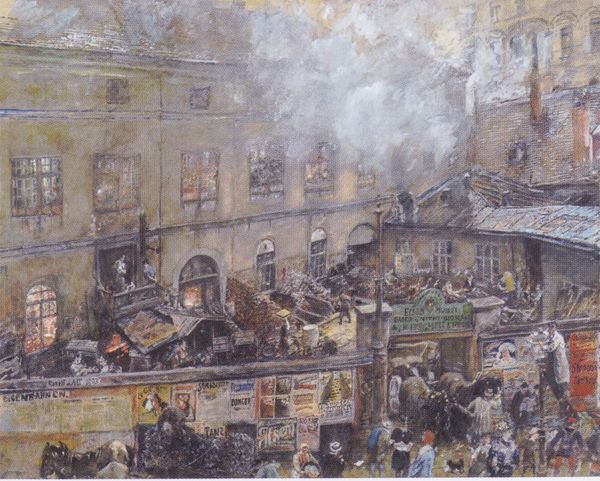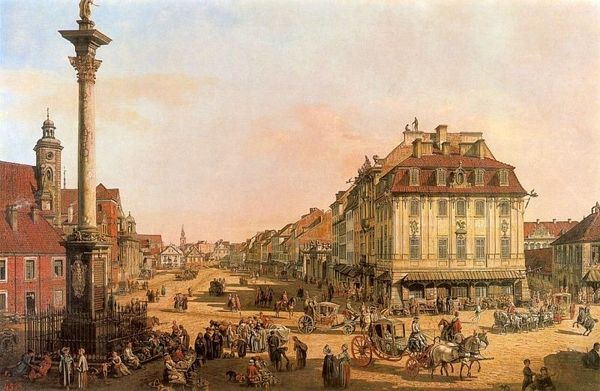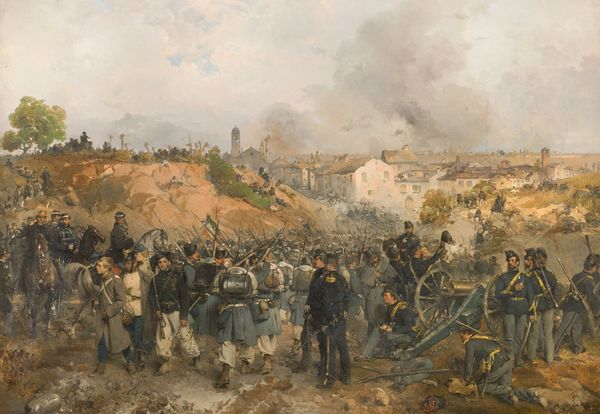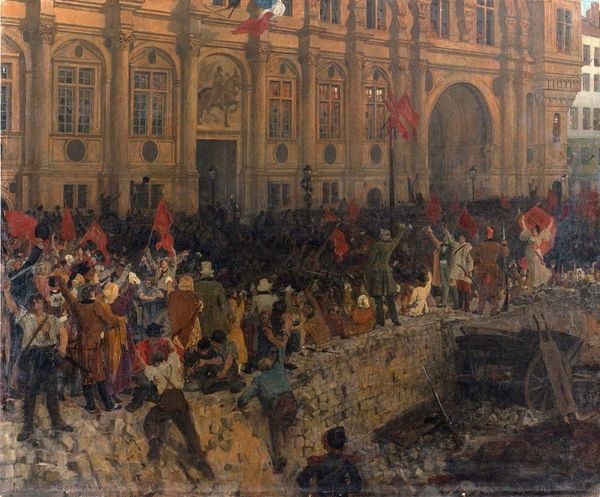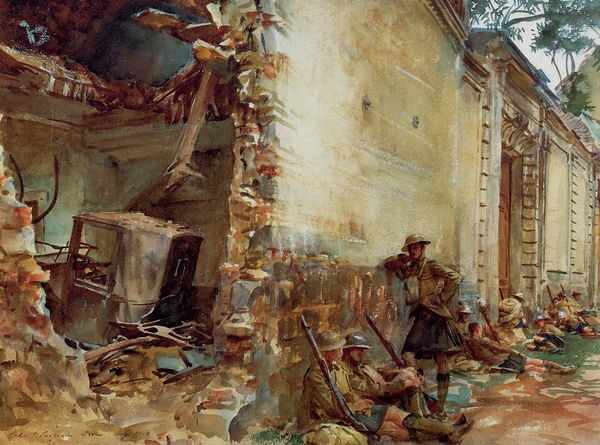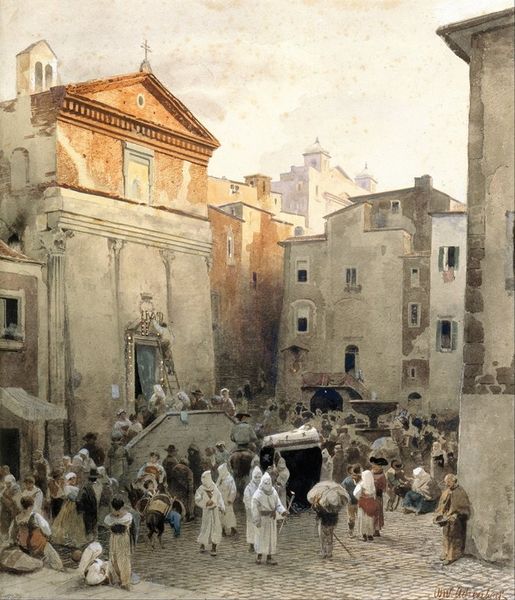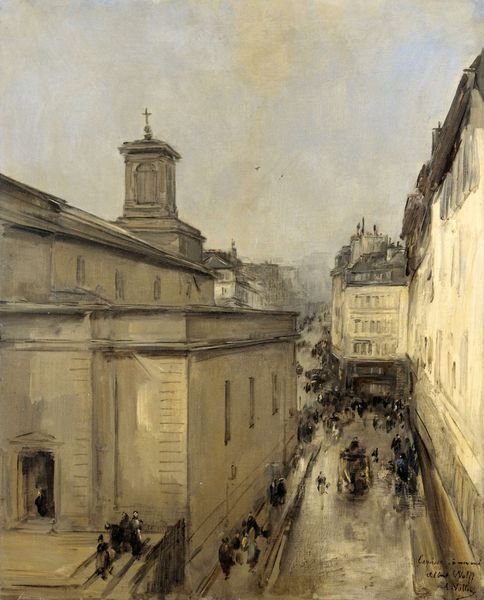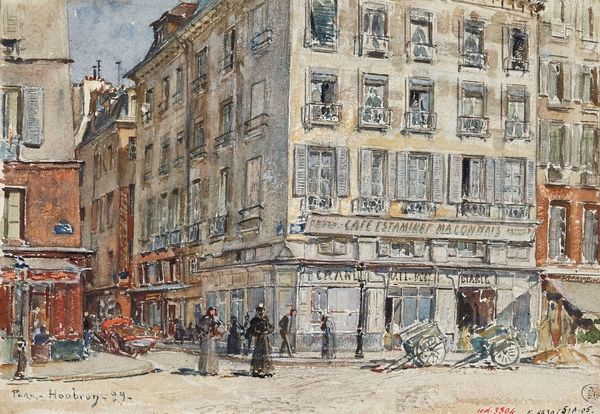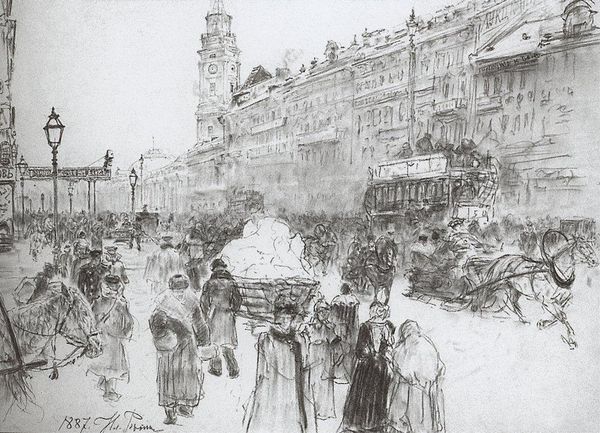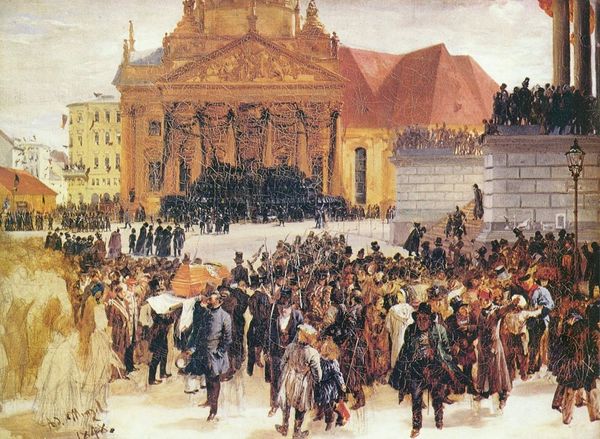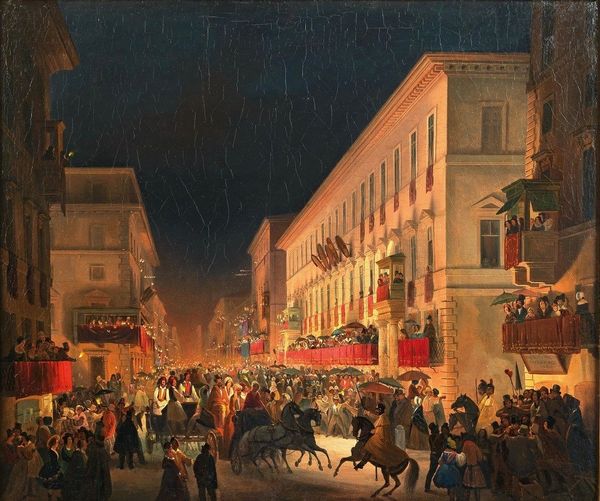
Copyright: Public domain
Curator: Achille Beltrame’s "Episode Of The Revolutionary Motions Alla Foppa", created around 1900, uses oil on canvas to capture a moment of intense urban unrest. The painting pulses with energy, even now. There's something very raw and chaotic about it; rubble scattered everywhere, figures in disarray... Editor: Yes, the materiality contributes to that frenetic energy. You can almost feel the gritty texture of the city under siege through Beltrame's brushstrokes. The rapid strokes themselves show that this scene happened quickly. Considering that labor practices shifted during this time, the way Beltrame made art speaks to industrializing culture at large. But I wonder who the rebels and soldiers in this painting were protecting or rebelling against? Curator: Exactly. Beltrame made illustrations for newspapers during his life so that common people could get their news through more available channels. This work represents a historical event—likely a labor protest given the period—and thus is rooted in socio-political realities. Notice that everyone in the crowd looks the same. This isn't just an objective record. Editor: I agree that it makes sense that the masses are more generic in representation! However, while documenting class conflict and civic turmoil, Beltrame also romanticizes it through the dramatic composition and his painterly, looser style, not usually the look and feel of mass-produced media of the period. The Italian Renaissance references, though somewhat subtle, might hint at ideals of revolution against oppressive forces and signal the possibilities that the new state could mean an expansion to long lost rights. What do you make of that? Curator: Interesting, indeed. And while there might be these undertones that relate back to historical and cultural influences, let's not forget this was still a commissioned artwork and a product for sale. The elite would own art of the revolutionary motion which seems counterintuitive when thinking of revolution on principle. This artwork challenges the binary between high art and mass communication by immortalizing everyday social upheaval. Editor: Your insight is very important to underscore in conversations of who commissions works of art and how these influence not only what we see in these pieces but how we can view them too! Ultimately, Beltrame has gifted us a way to grapple with complexities through engaging artwork with turbulent subject matter, captured with the romantic's brush. Curator: Absolutely. The dialogue the artwork fosters pushes us beyond simply witnessing the painting; it calls us to delve into the making of meaning for revolution!
Comments
No comments
Be the first to comment and join the conversation on the ultimate creative platform.
